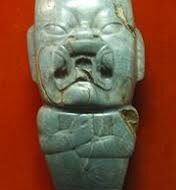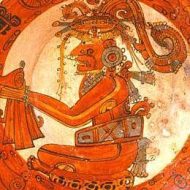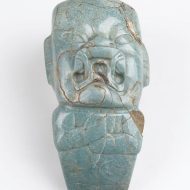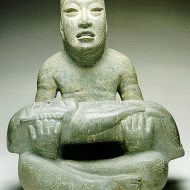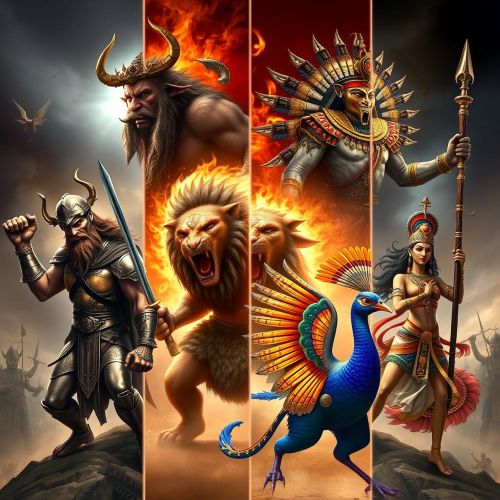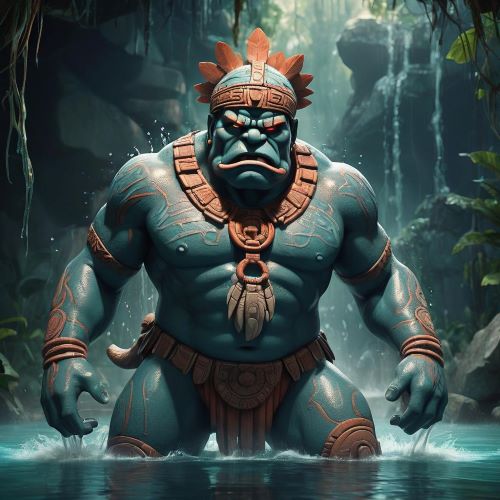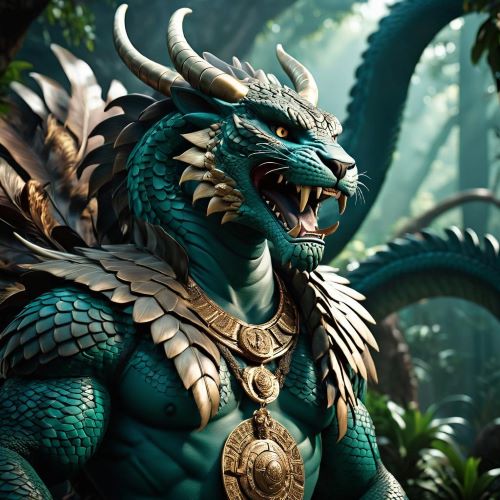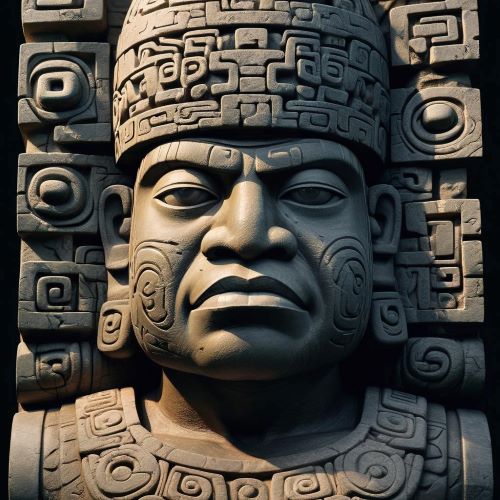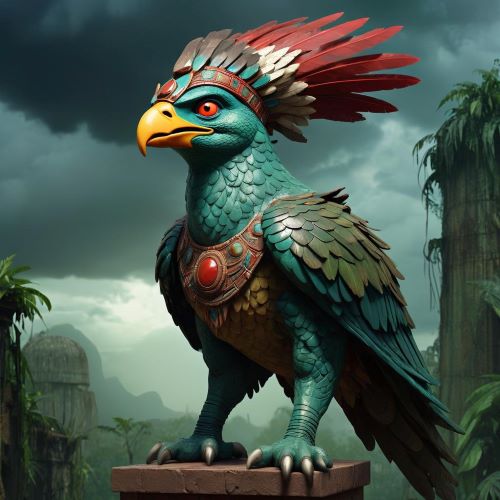Maize Deity : The Agriculture God
Listen
At a glance
| Description | |
|---|---|
| Origin | Olmec Mythology |
| Classification | Gods |
| Family Members | N/A |
| Region | Mexico |
| Associated With | Maize, Agriculture |
Olmec Maize God
Introduction
Maize Deity is another Olmec god who has not been identified with a name. The physical representation of the god in ancient carvings associating him with a cleft of corm has lead researchers to name him Maize God or God II.
The shamans who were an important part of the Olmec worship and rituals were considered to be in constant touch the gods and conveyed the messages from the gods to the people.
Physical Traits
Maize Deity or God II was often depicted as a humanish figure with a corn cob growing from a cleft in its head. It had almond-shaped eyes and a large flat nose. The sculptures of the Maize Gods usually have other carvings atop the heads. The statues are almost never shown from waist down.
Family
The Maize Deity is considered to be the precursor for other Maize Gods in the other South American and Mesoamerican cultures. Although the Mayan and Aztec versions of the god have a family to attribute, the Olmec version does not.
Other Names
The Olmec Gods have never been identified with actual names due to the lack of a written history or a written language. This god is often called God II, Maize God or Maize Deity.
Powers and Abilities
The importance of agriculture and maize to the lives of the Olmec was evidenced by the god known as the Maize God. He was often seen accompanying rulers probably highlighting the role of the rulers to ensure that the people were well fed and also a guarantee of abundant crops.
Modern Day Influence
Modern studies in Aztec, Mayan and Inca civilizations have started revealing new information on the Maize Deity and joining the dots that would reveal more information about the Olmec pantheon. Some studies also link the Olmec Maize deity to the sun god of the Mayans and believe that there is enough proof to link the two.
Related Images
Source
Miller, M., & Taube, K. (1993). The Gods and Symbols of Ancient Mexico and the Maya: An Illustrated Dictionary of Mesoamerican Religion. Thames & Hudson.
Coe, M. D. (2015). The Maya. Thames & Hudson.
Tedlock, D. (1982). The Creation Myth and the Maize God in Popol Vuh. Journal of Latin American Lore.
Taube, K. (1996). The Maize God and the Classic Maya Period. RES: Anthropology and Aesthetics, 29/30, 171–192.
Mark, J. J. (2019). Maya Maize God. World History Encyclopedia. Retrieved from https://www.worldhistory.org/Maya_Maize_God/
Britannica. (n.d.). Maya Religion and Maize Worship. Retrieved from https://www.britannica.com
The Metropolitan Museum of Art. (n.d.). Maya Maize God Depictions in Art. Retrieved from https://www.metmuseum.org
Frequently Asked Questions
What Olmec deity was associated with corn?
The Olmec deity associated with corn or maize is known as the Maize God. This god appears as a human-like figure with a stalk of corn growing out of his head. Because maize was such an important staple of life for the Olmec, it’s not surprising that they dedicated a god to its production
How did the Olmecs use maize?
The Olmecs, one of the earliest civilizations in Mesoamerica, incorporated maize into their diet and culture in significant ways. They began to consume maize variants within their diet as the nixtamal, which consisted of a mixture of corn with ashes and sea shells. The land around the rivers was found to be good for growing crops, and with the creation of irrigation systems, they began to grow a variety of food, including maize. Maize was such an important part of the Olmec civilization that they even had a deity associated with it.
Why was corn important to the Olmecs?
Corn, or maize, was a vital part of the Olmec civilization. It was a staple food in their diet and was cultivated as one of their primary crops. The fertile land around the rivers, coupled with their irrigation systems, made it ideal for growing maize. Additionally, maize held religious significance for the Olmecs. They had a deity associated with maize, known as the Maize God, signifying its importance in their culture and daily life.

